Former president Fernando de la Rúa, who attracted voters with his image as an honest statesman and later fled office in a helicopter, with Argentina plunged into its worst-ever economic crisis, died Tuesday at age 81.
President Mauricio Macri sent a tweet expressing regret at the death of de la Rúa Monday morning, saying, "I share in the pain of his family. His democratic trajectory deserves the recognition of all Argentines."
The Télam state news agency said he died of cardiac arrest, kidney problems and other complications, after being hospitalised in Escobar, in the north of Buenos Aires Province.
The former president served from 1999 to December 2001, when he infamously escaped by helicopter from the rooftop of the Casa Rosada. It came after days of violent protests against his handling of the crisis, amid rioting that caused dozens of deaths across Argentina.
His brief presidency bad seen Argentina engulfed in economic crisis and gripped by a severe recession that set off bank runs and deadly street riots. More than 30 people were killed in rioting, including five in and around the Plaza de Mayo, the scene of violent clashes in the final days of de la Rúa's presidency.
De la Rúa responded by declaring a state of emergency on December 19, 2001, but it failed to stop the riots and his cabinet resigned. Unable to form a new government, the embattled president submitted his resignation to Congress the next day, lifting the state of emergency as his last official act and flying from the Casa Rosa presidential palace by helicopter.
Argentina then defaulted on its public debt, setting it adrift for several years until its economy gradually recovered, thanks to a cheap peso and booming demand for its agricultural exports.
Early days
De la Rúa was born on September 15, 1937 . He graduated from university with a law degree and was politically active from his youth in his native province of Cordoba.
He was elected senator at age 35, the minimum age necessary, earning him the nickname 'Chupete' ("pacifier" or "dummy.")
At the age of 36, he ran as vice-president on the ticket with Ricardo Balbín in a 1973 presidential election that was won by the leader and founder of Peronism, Juan Domingo Perón.
De la Rúa then lost against Raúl Alfonsín in the first presidential election held after Argentina returned to democracy following the brutal 1976-1983 military dictatorship.
After serving in both houses of Congress, he was elected as the first ever mayor of Buenos Aires City in 1996. The Argentine capital had achieved its autonomy from federal control two years earlier, following a constitutional reform.
De la Rúa launched his successful presidential candidacy amid a spate of economic turmoil that began under Carlos Menem and frustration by Argentines over what they believed was the then-president's tolerance of entrenched corruption.
His lack of charisma also helped him portray himself as an honest politician in contrast to Menem, a former race car driver and womaniser whose popularity plummeted from charges of corruption.
“People want boring,” de la Rua said while campaigning. “They’re tired of an administration that throws a party while half of the country goes hungry.”
He took office in December 1999 with a popularity rating above 70 percent, a no-nonsense image and a pledge to end the flamboyance of "Menemismo" and improve the economy. But the Radical Civic Union (UCR) leader was forced to order tax hikes, salary cuts for public workers and other unpopular measures and he left office with ratings in the single digits.
His image for transparency was tarred in 2000 when a journalistic investigation revealed allegations of bribes to opposition senators to pass a law weakening worker protections. The scandal caused the resignation of vice-president Carlos Álvarez and weakened the governing coalition.
Tackling crisis
In an effort to curb the economic and governance crisis, De la Rúa appointed Domingo Cavallo as economy minister. The Harvard University-trained economist was initially credited with turning around Argentina's inflation-wracked economy during his first stint in 1991 to 1996 by pegging the Argentine peso one-to-one with the US dollar. But in 2001, his belt-tightening policies, along with his decision to partially freeze bank accounts, proved highly unpopular, and he was also forced to step down in December 2001.
The 2001 to 2002 crisis was devastating. One of every five Argentines was jobless and many reported going hungry. The peso, de-linked from the dollar, lost nearly 70 percent of its value. Banks were barricaded behind sheet metal as thousands of protesters unsuccessfully tried to withdraw their savings.
During the second week of December 2001, Argentines began looting grocery stores after the government limited bank accounts withdrawals to US$1,000 a month. De la Rua had seized retirement savings and used central bank reserves to meet payments on the nation’s debt, weakening the backing of the peso.
The week of violence before his departure was the worst since at least 1989, when four days of rioting forced then-president Raul Alfonsin, also a member of the president’s Radical party, to step down.De la Rua tried to stop the uproar by sending scores of federal police carrying shotguns to patrol the capital city and snipers were located at the roof of public buildings.
At least 27 people died in the shocking protests and looting that swept Argentina in December 2001, as the economy unravelled. The country eventually defaulted on a record debt of more than US$100 billion.
After De la Rúa left, Argentina saw a revolving door of five presidents over two weeks.
The final image of de la Rúa's as president was his helicopter lifting off from the presidential palace rooftop as the sun set behind a haze of tear gas and a raging crowd hurled insults from the Plaza de Mayo.
Hours after de la Rúa resigned, hundreds of people celebrated in the Plaza de Mayo. “All politicians should leave,” the people chanted.
Distanced from politics, De la Rúa would reappear in courts over alleged corruption and accusations that he had failed to prevent the killing of protesters during the crisis. He was absolved in both cases.
Death
His death, this July 9, arrives on the anniversary of the commemoration of Argentina's independence.
De la Rúa had been in poor health for some time. At the turn of the year, he was admitted to hospital with acute respiratory and cardiac problems, later undergoing coronary angioplasty with a stent inserted into his heart, and a tracheotomy to assist with breathing problems.
De la Rúa already experienced a health scare towards the end of his 1999-2001 presidency but his heart problems had intensified since 2014 when he received his first stent.
After a long convalescence from which he was able to recover, he was re-hospitalized in May due to a kidney problems.
For the most part, former president had mostly stayed out of the public eye since the end of his presidency. The last time he appeared in public was at the gala that the government hosted at the Teatro Colón last November, as part of the G20 leaders summit.
De la Rúa is survived by his wife Inés Pertiné, and his children: Antonio, Fernando and Agustina.
- TIMES/AP/AFP





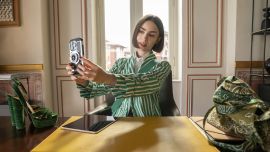
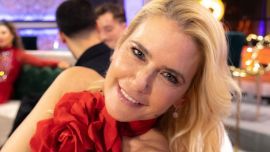
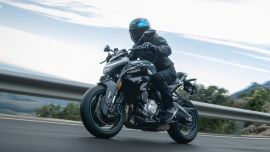





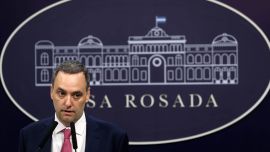


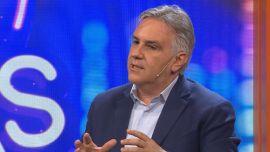

Comments